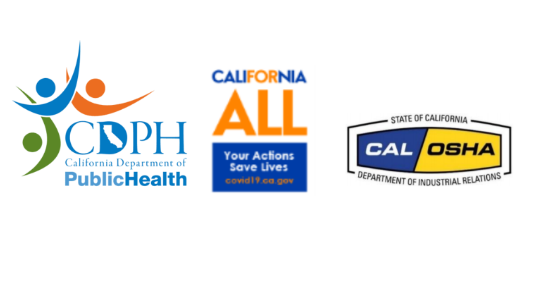Title Page
-
Conducted on
-
Prepared by
-
Location
Contents of Written Worksite Specific Plan
-
The person(s) responsible for implementing the plan.
-
A risk assessment and the measures that will be taken to prevent spread of the virus.
-
Training and communication with employees and employee representatives on the plan.
-
A process to check for compliance and to document and correct deficiencies.
-
A process to investigate COVID-cases, alert the local health department, and identify and isolate close workplace contacts of infected employees until they are tested.
-
Update the plan as necessary to prevent further cases.
Topics for Employee and Volunteer Training
-
Information on COVID-19, preventing spread, and who is especially vulnerable. <br>https://www.cdc.gov/coronavirus/2019-ncov/index.html
-
Self-screening at home, including temperature and/or symptom checks using CDC guidelines.<br>https://www.cdc.gov/coronavirus/2019-ncov/symptoms-testing/symptoms.html
-
The importance of not coming to work if employees have a frequent cough, fever, difficulty breathing, chills, muscle pain, headache, sore throat, the recent loss of taste or smell, or if they or someone they live with has been diagnosed with COVID-19.
-
When to seek medical attention.
-
The importance of hand washing.
-
The importance of physical distancing, both at work and off work time.
-
Proper use of cloth face covers
Individual Control Measures and Screening
-
Temperature and/or symptom screenings.
-
Encourage workers who are sick or exhibiting symptoms of COVID-19 to stay home.
-
Encourage frequent handwashing and use of hand sanitizer.
-
Provide and ensure workers use all required protective equipment.
-
Provide disposable gloves to workers using cleaners and disinfectants if required. Consider gloves a supplement to frequent hand washing for other cleaning, tasks such as handling commonly touched items or conducting symptom screening.
-
Cloth face covers are strongly recommended.
-
Restrict non-employees entering the facility to essential persons.
-
Remind the public that they need to use face masks/covers and avoid directly facing other passengers up close.
Cleaning and Disinfecting Protocols
-
Perform thorough cleaning in high traffic areas.
-
Perform routine cleaning and disinfection of all frequently touched surfaces.
-
Clean all areas of drivers’ cabs between shifts or users, whichever is more frequent.
-
Avoid sharing phones, other work tools, or equipment wherever possible. Never share PPE.
-
Use products approved for COVID-19 on the Environmental Protection Agency (EPA)-approved list and follow product instructions and Cal/OSHA requirements.<br>https://www.epa.gov/pesticide-registration/list-n-disinfectants-use-against-sars-cov-2
-
Equip stations, transit and rail offices, and transit and rail vehicles with proper sanitation products, and provide personal hand sanitizers to all frontline staff (e.g., operators).
-
Ensure that sanitary facilities stay operational and stocked at all times.
-
Consider upgrades to improve air filtration and ventilation.
Physical Distancing Guidelines
-
Implement measures to physically separate workers by at least six feet using measures such as physical partitions or visual cues (e.g., floor markings, colored tape, or signs to indicate to where workers should stand).
-
Encourage passengers to wear face covers when physical distancing is difficult to maintain.
-
Request passengers to avoid standing or sitting within six feet of operators.
-
Reduce onboard maximum occupancy to support physical distancing.
-
Stagger employee breaks, in compliance with wage and hour regulations, to maintain physical distancing protocols.
-
Reconfigure, restrict or close common areas and create alternative space for breaks where physical distancing is possible.
-
Require/encourage passengers to purchase tickets and add value to transit and rail cards online.
-
Allow/encourage passengers to verbally request a stop to avoid having to activate the stop request signal.
-
Develop a passenger entry and exit plan to minimize physical contact.
-
Operators should sanitize their hands before and after assisting passengers using a wheelchair or other mobility device.
-
Communicate the updated ridership practices and any changes to the frequency of service timetables to the public.
Sign Off
-
Name and Signature
















